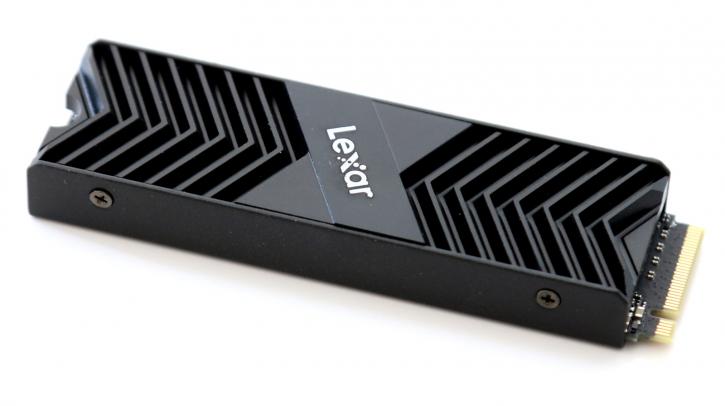Final Words & Conclusion
Final Words & Conclusion
Certainly, the Lexar NM800 PRO series is an excellent product. Not too expensive and quick. It may not always be able to keep up with the flagship products, but 90% of the time it is. True, some alternatives are somewhat faster if you check raw, sustained performance metrics. When access times are considered, however, this product ranks very high. OutstandingTBW values and a five-year warranty make this product very exciting. In conclusion, we will revisit relativity, as breaching the 6- 7 GB/sec barrier does not inevitably result in a considerably quicker gaming PC. This is a simple truth. The good news is that Lexar does not charge outrageous pricing for this outstanding product. Yes, this 6-7 GB/sec NVMe SSD is not cheap either, but I am not displeased at 11 cents per gigabyte (USD / 2TB model). (1 TB sells for 14 Cents/GB though. This solid-state drive (SSD) includes TLC writing, an increased lifetime, and a 5-year warranty. It would be difficult to dislike this product at that pricing.
Do we really need 7000MB/sec storage units?
Um no? This is a premium performance product, often synthetically measured, and you'd need serious workloads to get the best out of it. Your PC isn't going to boot faster as 9 out of 10 times your OS is the bottleneck, your PC games will load a fraction of a second faster, and your applications load up just as quickly as an NVMe SSD with reads/writes in the 2 GB/sec marker. That is the honest truth. However, the same folk that purchases a GeForce RTX 3090 Ti or Radeon RX 6950 XT combined with some sort Core i9 or Ryzen 9 series processor, it's for those guys where that last sniff of performance matters, whether that is realistic or not, I'll leave open to discussion. In retrospect, however, we do have technologies coming up like DirectStorage. This will allow the graphics card to load textures directly from the SSD bypassing the processor, freeing up processor cycles for other tasks, and speeding up texture load times. In this way, if they have a fast M.2 disk, they will be in the game in less than 5 seconds even on large maps, a negligible time compared to the loading times we are used to today. That technology will be released in the Windows 11 timeframe.
Endurance
Lexar offers 1000 TBW and 2000 TBW (Terabytes Written) for the 1TB and 2TB models, coupled with an MTBF of up to 1,500,000 Hours (Mean(ingless) Time Between Failures). We talked so much about this in the past already, endurance, the number of times NAND cells can be written before they burst and shatter into small pieces (well, they just die and are mapped out, any data present on that cell is written to a healthy one). Bigger volume sizes mean more NAND cells; more NAND cells thus increase endurance. . So how long does a 2000 TWB storage unit last before NAND flash cells go the way of the dodo? Well, if you are a really extreme user, you might be writing 50 GB per day (normal users likely won't even write that per week), but based on that value, 50GB x 365 days= 18.25 TB per year written. So that's over 109 years of usage, half that for the 1TB SSD. And let me reiterate, writing 50 GB per day is a very devoted value.
Thermals
The controller is not fitted with a heatsink or thermal sticker; the controller as such gets hot. Ultimately, it could result in some thermal throttling under an extreme workload. Keep this SSD under a motherboard or the version we tested, with included heatsink; this will not be an issue. We always advise a little bit of airflow over your SSDs also.
Performance
The NM800 PRO series is a blazingly fast product. Overall read performance ranges from 3GB to over 7 GB/sec. Trace testing revealed that performance was very strong, and access times (latency) are wild. you can argue some of the sustained workloads, but would you ever notice the difference between 6 or 7 GB/s. The more NAND layers there are, the slower access times. We're talking milli-fractions of a second here. Bigger volume size SSDs help here because more NAND channels can be utilized.
Concluding
The Lexar NM800 PRO 2TB drive is pretty awesome. It competed with most of our tests' top NVMe SSDs on the market. However, the results vary depending on the benchmark and test suite. The NM800 PRO is, however, entering a crowded market. During our tests, performance results were surprising, but it was consistently a very fast PCIe Gen 4 drive by a considerable margin, especially in access times and real-world traces, indicating a new king in town. While not the absolute best in sustained performance, the SSD compensates with a reasonable price/performance ratio, with prices ranging between $110 (500GB), $144 (1TB), and $240. (2TB). At 12 cents per GB, the 2 TB model is the most appealing. The thermal testing results are satisfactory, but, if you intend to run heavy workloads, place this unit behind a heatsink or opt for the version as tested, as that heatsink works well. Most end users will have no problems if a small amount of airflow is delivered to the drive, which is usually more than enough. Guru3D.com strongly recommends this product.
Lexar has a deal to offer you this week through amazon:
- NM800 Pro SSD with Heatsink 2TB Deal price: $239.99
- NM800 Pro SSD with Heatsink 1TB Deal price: $143.99
Recommended Downloads



